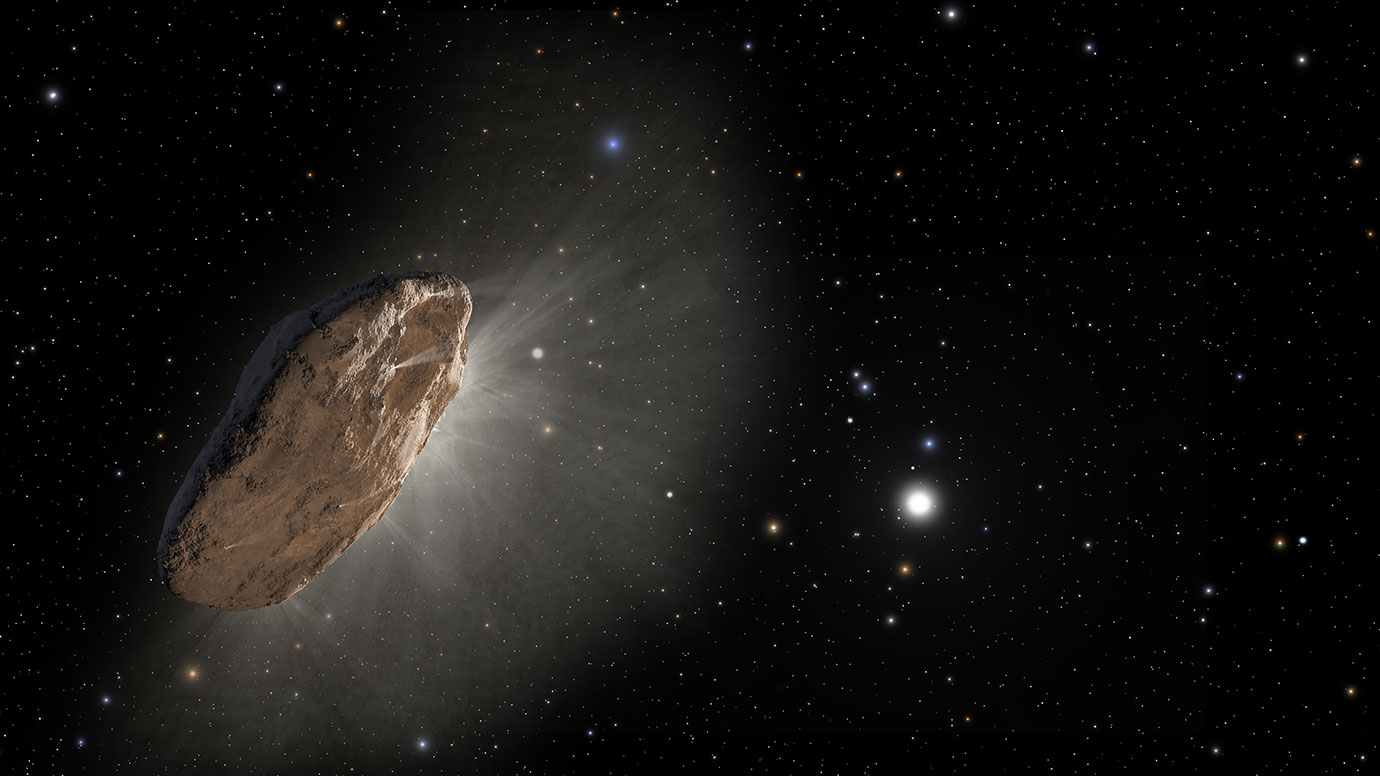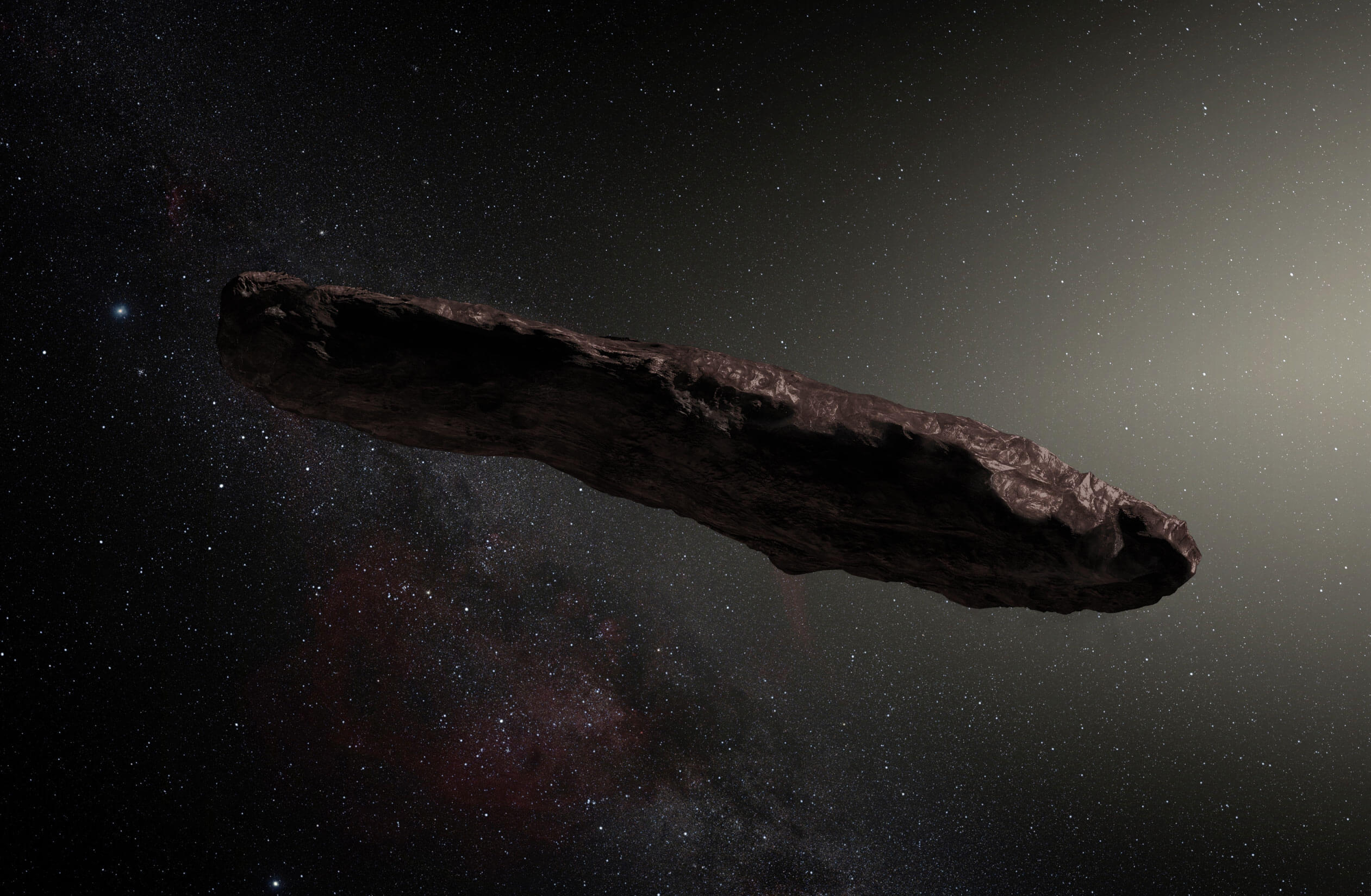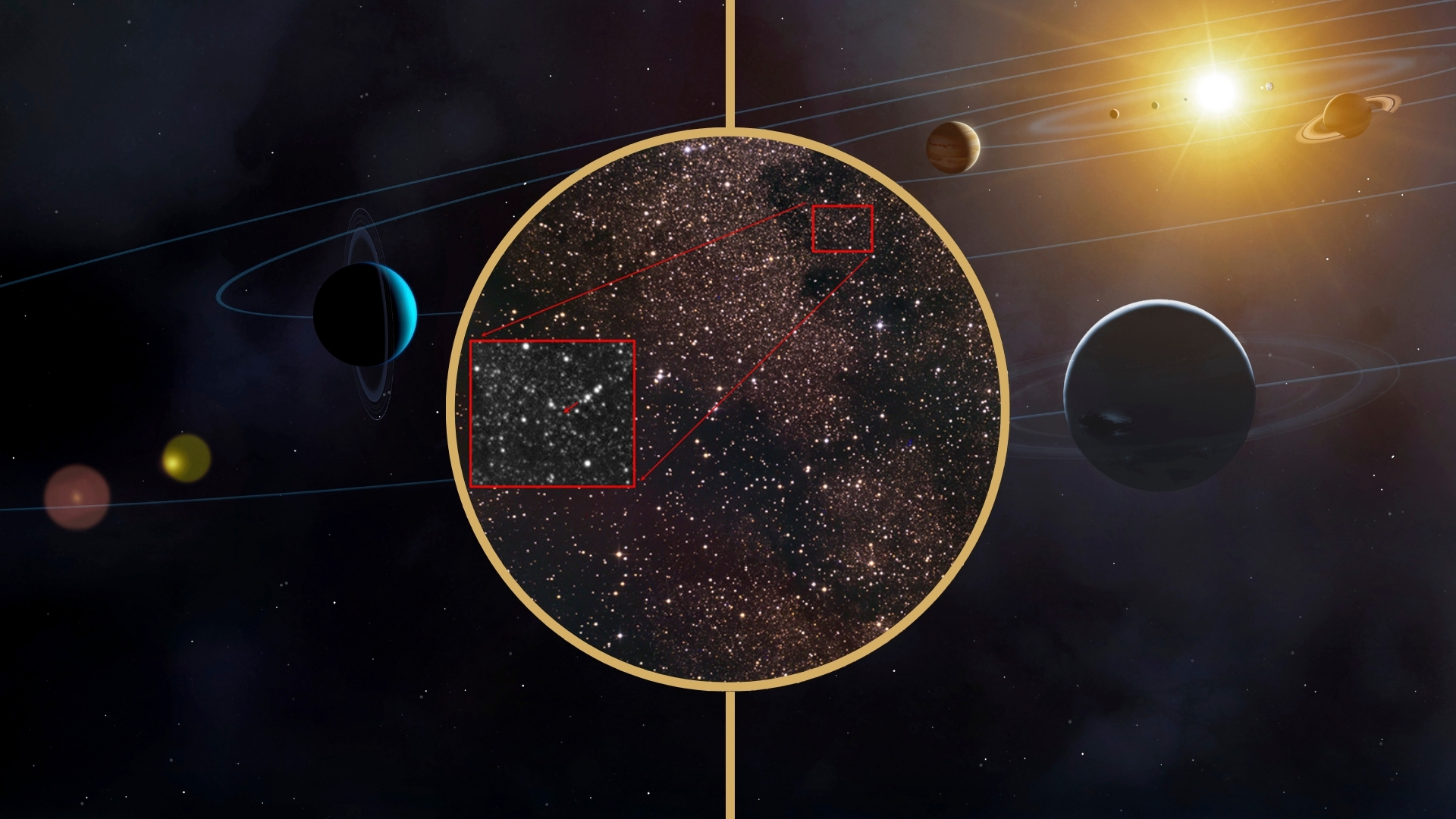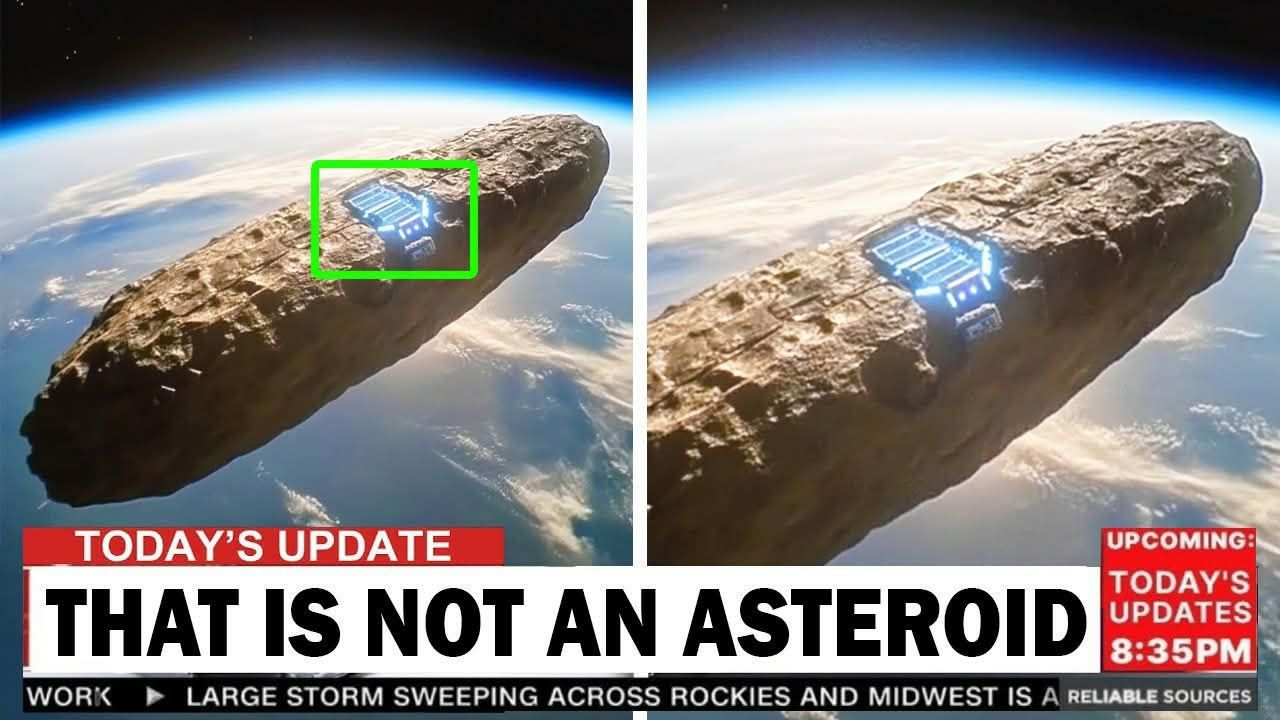In October 2017, astronomers at the University of Hawaii made a discovery that stunned the scientific world. Using the Pan-STARRS1 telescope, they detected a strange, elongated object hurtling through the solar system on a trajectory that proved it came from outside our solar system. This was the first confirmed interstellar visitor ever observed by humans.
The object was named ‘Oumuamua, a Hawaiian term meaning “scout” or “messenger from afar arriving first.” In the years since its discovery, scientists have debated its nature. Was it a comet without a tail, an asteroid unlike any we’ve seen, or something more exotic? Theories range from natural explanations to speculative ideas like alien technology. While the majority of astronomers stress caution, everyone agrees: ‘Oumuamua is one of the most mysterious objects ever studied.
The Discovery of a Cosmic Outsider

‘Oumuamua was first spotted on October 19, 2017, though calculations show it had already passed closest to the Sun weeks earlier. Unlike most solar system objects, which orbit the Sun in elliptical or circular paths, ‘Oumuamua followed a hyperbolic trajectory, meaning it was just passing through and would never return.
At its closest, it came within about 24 million kilometers of Earth—safe by cosmic standards, but close enough to be studied. What immediately struck astronomers was how different it looked and behaved compared to familiar asteroids and comets.
What Made ‘Oumuamua So Strange?
Several features baffled scientists:
-
No cometary tail: Unlike comets, which release gas and dust when heated by the Sun, ‘Oumuamua showed no visible tail or coma.
-
Elongated shape: Observations of its brightness suggested it was at least 5 to 10 times longer than it was wide, possibly shaped like a cigar—or a flat pancake. No known natural asteroid matches this extreme aspect ratio.
-
Unusual acceleration: As it moved away from the Sun, it sped up slightly, as though pushed by something. Yet no clear outgassing (jets of material) was observed to explain the boost.
-
Reflectivity: Its surface appeared more reflective than typical asteroids, raising questions about its composition.
These anomalies led to intense speculation and dozens of scientific papers, each trying to solve the puzzle.
Theories About ‘Oumuamua
Natural Explanations

Many scientists argue that ‘Oumuamua, while unusual, could still be explained naturally. Proposed ideas include:
-
Hydrogen iceberg: A fragment of frozen hydrogen that sublimated when near the Sun, creating acceleration without visible gas.
-
Nitrogen iceberg: A shard of nitrogen ice from a Pluto-like exoplanet’s surface.
-
Exotic comet: A new type of comet whose outgassing was too faint for our telescopes to detect.
Each theory solves part of the mystery but not all. The hydrogen iceberg model, for instance, explains acceleration but struggles with how such an object could survive interstellar travel without evaporating.
The Solar Sail Hypothesis

One of the more controversial theories came from Harvard astronomer Avi Loeb, who suggested ‘Oumuamua might be a solar sail—a thin, light structure propelled by starlight. Loeb argued that its acceleration and unusual shape could fit this explanation, raising the possibility that it was built by an advanced civilization.
While most astronomers consider this speculative, the idea sparked worldwide debate and inspired further study of interstellar visitors.
Michio Kaku’s Perspective
Theoretical physicist Michio Kaku has also commented on ‘Oumuamua, highlighting its anomalies as reminders of how little we know. He emphasizes that while we cannot jump to conclusions about aliens, we must take such mysteries seriously. For Kaku, ‘Oumuamua represents a wake-up call: the universe may be full of surprises, and humanity should invest more in monitoring and exploring interstellar space.
The Silence of the Object

Another striking aspect of ‘Oumuamua is its silence. Unlike human probes such as Voyager, which transmit radio signals, ‘Oumuamua emitted no detectable communication. For some, this reinforces the natural-object explanation. For others, it leaves room for speculation: if it were artificial, perhaps it was designed to remain undetected.
Regardless, the lack of signals underscores the challenge of studying such fleeting visitors. By the time we noticed it, ‘Oumuamua was already speeding away from the Sun at over 95,000 km/h, beyond the reach of any spacecraft we could launch in time.
What Came Next: 2I/Borisov
In 2019, astronomers discovered another interstellar object, 2I/Borisov, which looked more like a traditional comet with a clear tail. Its behavior suggested that interstellar comets may be common. Compared to ‘Oumuamua, Borisov seemed easier to explain, reinforcing the view that not all interstellar visitors are so enigmatic.
Yet the contrast also made ‘Oumuamua’s strangeness stand out even more. Why was the first one so different?
Implications for Science
‘Oumuamua’s brief visit reshaped how astronomers think about planetary systems beyond our own. It suggests:
-
Interstellar debris is common: Many objects are likely ejected from forming planetary systems and wander through the galaxy.
-
Our detection is limited: With better telescopes, we may discover such objects frequently.
-
Opportunities for exploration: Future missions could be designed to intercept interstellar visitors for direct study.
Already, projects like the Vera Rubin Observatory (expected to begin operations in 2025) aim to detect faint, fast-moving objects, potentially spotting many more “messengers” from other stars.
Philosophical and Existential Reflections

Beyond science, ‘Oumuamua stirs profound questions. Are we truly alone in the universe, or are we just beginning to notice signs of other systems—or even other intelligences? If it was natural, it still shows that planetary systems beyond our own are active and dynamic. If it was artificial, it would mark the most extraordinary discovery in human history.
Either way, it humbles us. A tiny rock (or sail) from another star crossed our path, and we barely managed to glimpse it before it vanished into the dark. It reminds us how vast and mysterious the cosmos remains.
Preparing for the Next Messenger
The lesson of ‘Oumuamua is clear: we must be ready. Future strategies could include:
-
Dedicated telescopes to detect interstellar visitors early.
-
Rapid-response spacecraft designed to launch quickly and study them up close.
-
International cooperation to share data and resources in real time.
NASA and ESA have already discussed mission concepts like Comet Interceptor, which could adapt to study a new interstellar object if one is discovered.
Conclusion
‘Oumuamua may never reveal its true nature. With limited data from a fleeting encounter, we may be left with educated guesses. Yet its impact is undeniable. It showed us that interstellar visitors are real, that our solar system is not isolated, and that mysteries still await just beyond our reach.
For scientists like Michio Kaku, Avi Loeb, and countless astronomers worldwide, ‘Oumuamua is both a puzzle and an invitation: to look deeper, to question more boldly, and to prepare for what else might come.
Whether it was a comet, an iceberg, or something stranger, ‘Oumuamua has already changed science forever. And as humanity looks up at the stars, we now know that sometimes—just sometimes—the universe sends a messenger to remind us how much more there is to learn.
